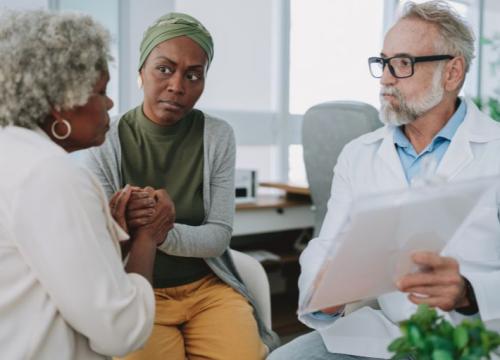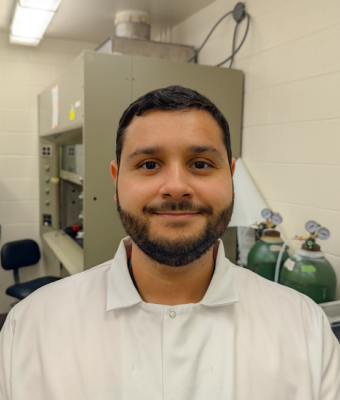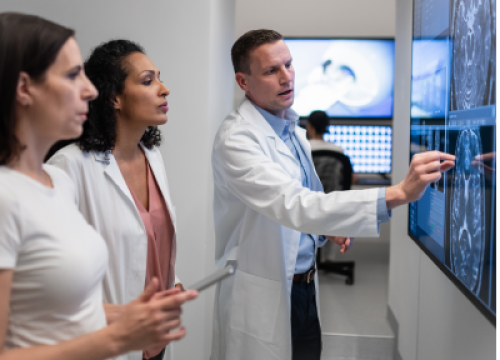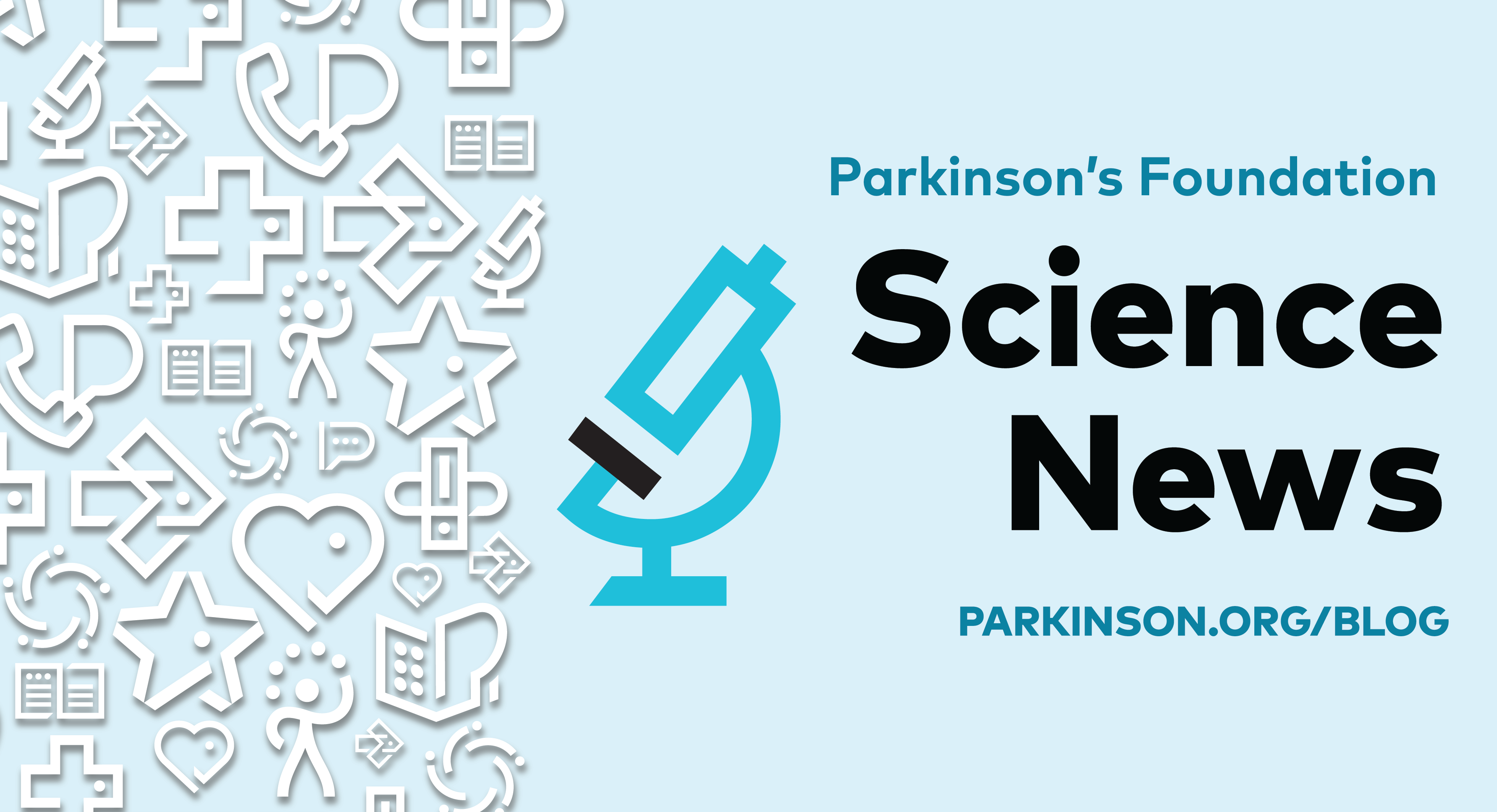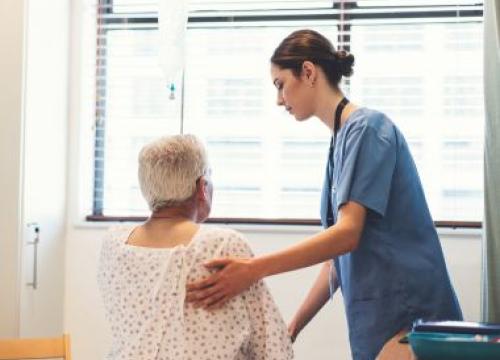12 Milestones You Helped Us Achieve In 2024
2024 was a notable year for the Parkinson’s Foundation. It was 365 days of advancing research, listening to inspiring stories and forming deeper connections with people living with Parkinson’s disease (PD), their families, care teams and researchers.
With your support, we amplified our commitment to connecting more people to critical PD resources, expanding life-changing research and building a stronger, more inclusive network for those navigating Parkinson’s.
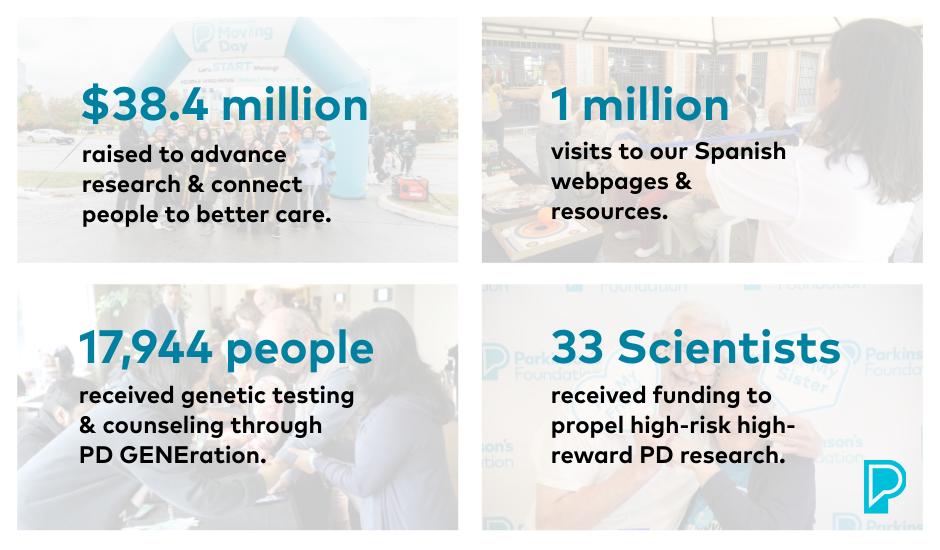
Thanks to YOU, here are the top 12 ways we made a difference this year:
1. Published PD GENEration study findings and expanded to new countries
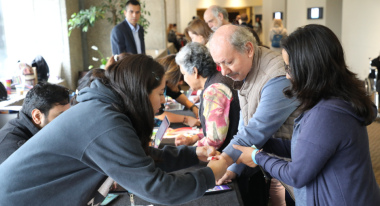
In 2024, PD GENEration: Mapping the Future of Parkinson’s Disease expanded to new countries. We moved our genetics study into its next phase with support from the Global Parkinson's Genetics Program (GP2), a program of the Aligning Science Across Parkinson's (ASAP). This funding allowed us to expand recruitment and reach more people across the U.S., Canada, Latin America, South America and beyond.
In 2024, our genetics study shared these published results:
-
Provided genetic testing and counseling to 17,944 people with Parkinson’s, at no cost.
-
Approximately 13% of people with Parkinson’s have a genetic link to the disease.
-
77% of participants have never participated in a research study before.
Additionally, PD GENEration began using a new, enhanced genetic test. We went from identifying seven PD-related genes to whole genome sequencing, which provides researchers with the most comprehensive data to study the genetics behind PD.
2. Funded 33 Scientists advancing high-risk, high-reward research
In 2024, we awarded nearly $3 million in research grants to 33 scientists conducting high-risk projects that do not typically receive federal funding. These are the kinds of projects that explore original approaches to care and propose new treatment ideas.
Meet Henricus Ruhe, MD, PhD
2024 Parkinson’s Foundation Impact Awardee
Understanding how depression and PD overlap in the brain is the focus of Dr. Ruhe’s Foundation-funded research. Over the next few years, he will work to identify the connections between depression and PD, which could uncover new treatments for both.

3. Led the national effort to provide reliable PD hospital care
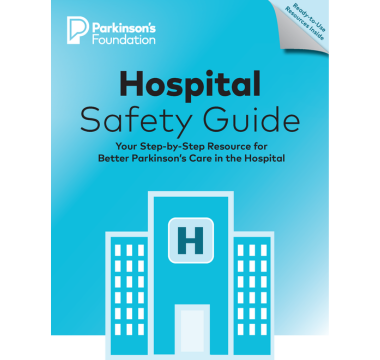
Each year, more than 300,000 people with Parkinson’s are hospitalized in the U.S. In 2024, we led the national effort to improve hospital care for Parkinson’s through systemic change. Our Hospital Care Initiative aims to help people with PD receive more reliable hospital care. To drive the change, we published a new Hospital Safety Guide for the community, distributing over 18,000 copies at no cost — and Hospital Care Recommendations for healthcare professionals.
Order or download the Hospital Safety Guide
4. Advocated for President to sign National Parkinson's Project into law
In 2024, President Biden signed the National Parkinson's Project into law. This is the first-ever federal legislation dedicated to ending Parkinson’s. Here are some ways this monumental bill can make an impact:
-
Dramatically increase federal research funding
-
Develop more effective pathways for treatments and cures
-
Improve early diagnosis
-
Spark new and improved models for patient care
-
Address health disparities in diagnosis, treatment and clinical trial participation
In 2025 and beyond, the Parkinson’s Foundation is excited and honored to advocate for the PD community to help this new law create meaningful change.
5. Funded local Parkinson’s programs in 40 states
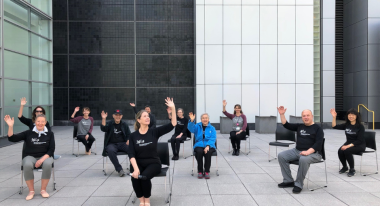
We awarded more than $1 million in community grants for programs that help people living with PD in 40 states. Every health and wellness program we fund helps people live better with PD — from Rock Steady boxing and dancing classes to support groups. Since 2011, the Foundation has devoted more than $11.5 million in 879 community-based programs.
Pictured: Parkinson’s Foundation Community Grantee, San Francisco Ballet School offers free weekly classes, social gatherings, tickets to ballet performances, dance education and more. Read Cecelia’s story now
To find your nearest exercise or wellness class, visit your local chapter’s webpage or call our Helpline at 1-800-4PD-INFO (1-800-473-4636).
6. Raised $38.4 million to advance research, care and community programs through our Reach Further campaign
Thanks to our amazing supporters, our Reach Further fundraising campaign exceeded its goal early. In just three years, we raised $38.4 million to accelerate progress in Parkinson’s research, improve care and increase access to quality-of-life programs.
Keep the momentum going. Donate now
7. Bolstered Parkinson’s awareness year-round

Throughout April we brought awareness to the #ABCsofPD, highlighting the most pressing Parkinson’s symptoms and topics. On April 2, 2024, we had the opportunity to ring the Nasdaq closing bell for Parkinson's Awareness Month. Opportunities like this are an impactful way we can reach more people and shine a light on the 10 million people living with PD worldwide.

On April 18, 2024, the producing team behind the Broadway hit, A Beautiful Noise: The Neil Diamond Musical presented $750,000 to the Parkinson’s Foundation in honor of legendary singer, songwriter and performer Neil Diamond, who is living with Parkinson’s.
We believe in spreading Parkinson’s Awareness year-round through steadily releasing new blog articles, podcast episodes, resources and interacting with our incredible community through social media.
Follow us and share one of our posts with your friends
8. Reached 1 million visits to our new Spanish PD pages
Hispanic and Latino members of the PD community often face distinct barriers to living well with Parkinson’s. Guided by our Spanish Advisory Group, we continue to develop educational opportunities and new resources for the greater Spanish-speaking Parkinson’s community. In 2024, our more than 50 Spanish pages on Parkinson.org reached 1 million visits. This information is not only reaching those who need them, but helping spread Parkinson’s awareness all over the world.
9. Reached 7,000 people through our volunteers

Volunteers are essential to our mission, helping us with outreach and representing us at local events. This year, we trained 232 Parkinson’s Foundation Ambassadors, who completed 195 presentations and reached 7,000 people.
Darrell Allers is a Parkinson’s Foundation Ambassador whose diagnosis eventually led him to volunteering, helping educate his community about Parkinson’s. Read his story.
Find a volunteer opportunity near you
10. Furthered our commitment to discovering new PD medications
We continue to provide early-stage funding for compounds that have the potential to become Parkinson’s drugs through our drug discovery and development initiative, Parkinson’s Virtual Biotech. Together with Parkinson's UK, we’re funding studies developing new, PD medications in years, not decades.
11. 20,000 participants raised more than $8.3 million through community fundraising events

Parkinson’s Foundation community fundraisers raised an impressive $8.3 million to advance PD research, access to care and life-changing resources in 2024. Together, every Moving Day, A Walk for Parkinson’s, walker, Parkinson’s Champion fundraiser and Parkinson’s Revolution rider brought us closer to a cure.
Peggy Farber joined Parkinson’s Champions to team up with other athletes with PD and be part of a louder voice in raising awareness. Read her story.
Become a Parkinson’s Champions
Join us for Parkinson’s Revolution
12. Connected caregivers to vital resources for preventing burnout
In November for National Family Caregivers Month, we highlighted the importance of caregiver well-being through addressing the challenges of burnout. We connected more people to support and resources that highlight the importance of self-care initiatives aimed to empower care partners.
Caregiver burnout is a state of physical, emotional and mental exhaustion experienced by individuals who care for others, typically family members or loved ones, who are unable to care for themselves.
Explore our care partner resources
In 2025, we’re setting our sights on even greater achievements for everyone impacted by Parkinson’s— and we can’t do it without you.
Related Materials
Related Blog Posts

Parkinson's Medications 101

